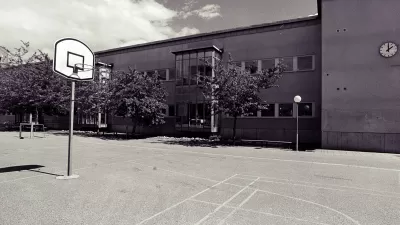City and county leaders shared their plans for millions in new annual revenue at the 2017 VerdeXchange Conference.

After a comprehensive survey revealed a serious lack of quality open space in Los Angeles County, voters overwhelmingly approved a November ballot measure providing $93 million a year for existing and new parks countywide.
Los Angeles City Councilmember David Ryu and Planning Commissioner Richard Katz joined Santa Monica Mountains Conservancy Chair Irma Muñoz and Trust for Public Land’s Tori Kjer at the recent VerdeXchange Conference (VX2017) to envision how the 88 cities, unincorporated areas, and community partners of Los Angeles County will take advantage of this opportunity.
They explain that the parks assessment grounded claims of need across the county in real data, providing a basis for the equitable distribution of funding. A disparity in access to quality open space was a key finding of the survey.
The new funding will prioritize multi-agency cooperation and public-private partnerships, as well as multi-benefit projects. Those could be parks that include free community gardens, or that contribute to the county's overall climate resilience by acting as stormwater capture and treatment facilities.
It will also go to projects that haven’t been traditionally thought of as fitting into park measures: beaches, watersheds, and real multi-benefit projects. We can absolutely get that slide and those swings in that park, but we can also get stormwater parks, so that we’re fulfilling multiple purposes with our open spaces.
The city of Los Angeles—which recently secured its own new parks funding from a reformed developer fee—also plans to pursue joint-use arrangements with schools that have open space or playgrounds.
"It's all about giving priority to projects that stretch every dollar by leveraging partners, state funds, county funds, and federal funds," Councilmember Ryu explains.
FULL STORY: Parks and Placemaking: How Will LA Spend $93 Million Annually in Park Funding?

Alabama: Trump Terminates Settlements for Black Communities Harmed By Raw Sewage
Trump deemed the landmark civil rights agreement “illegal DEI and environmental justice policy.”

Study: Maui’s Plan to Convert Vacation Rentals to Long-Term Housing Could Cause Nearly $1 Billion Economic Loss
The plan would reduce visitor accommodation by 25% resulting in 1,900 jobs lost.

Why Should We Subsidize Public Transportation?
Many public transit agencies face financial stress due to rising costs, declining fare revenue, and declining subsidies. Transit advocates must provide a strong business case for increasing public transit funding.

Paris Bike Boom Leads to Steep Drop in Air Pollution
The French city’s air quality has improved dramatically in the past 20 years, coinciding with a growth in cycling.

Why Housing Costs More to Build in California Than in Texas
Hard costs like labor and materials combined with ‘soft’ costs such as permitting make building in the San Francisco Bay Area almost three times as costly as in Texas cities.

San Diego County Sees a Rise in Urban Coyotes
San Diego County experiences a rise in urban coyotes, as sightings become prevalent throughout its urban neighbourhoods and surrounding areas.
Urban Design for Planners 1: Software Tools
This six-course series explores essential urban design concepts using open source software and equips planners with the tools they need to participate fully in the urban design process.
Planning for Universal Design
Learn the tools for implementing Universal Design in planning regulations.
Smith Gee Studio
Alamo Area Metropolitan Planning Organization
City of Santa Clarita
Institute for Housing and Urban Development Studies (IHS)
City of Grandview
Harvard GSD Executive Education
Toledo-Lucas County Plan Commissions
Salt Lake City
NYU Wagner Graduate School of Public Service





























